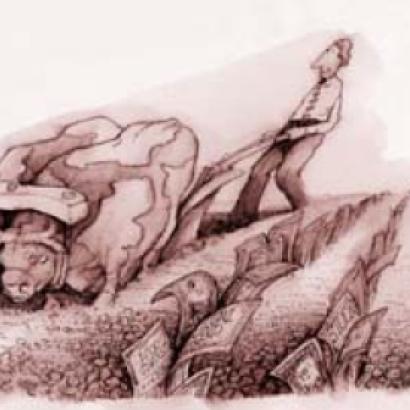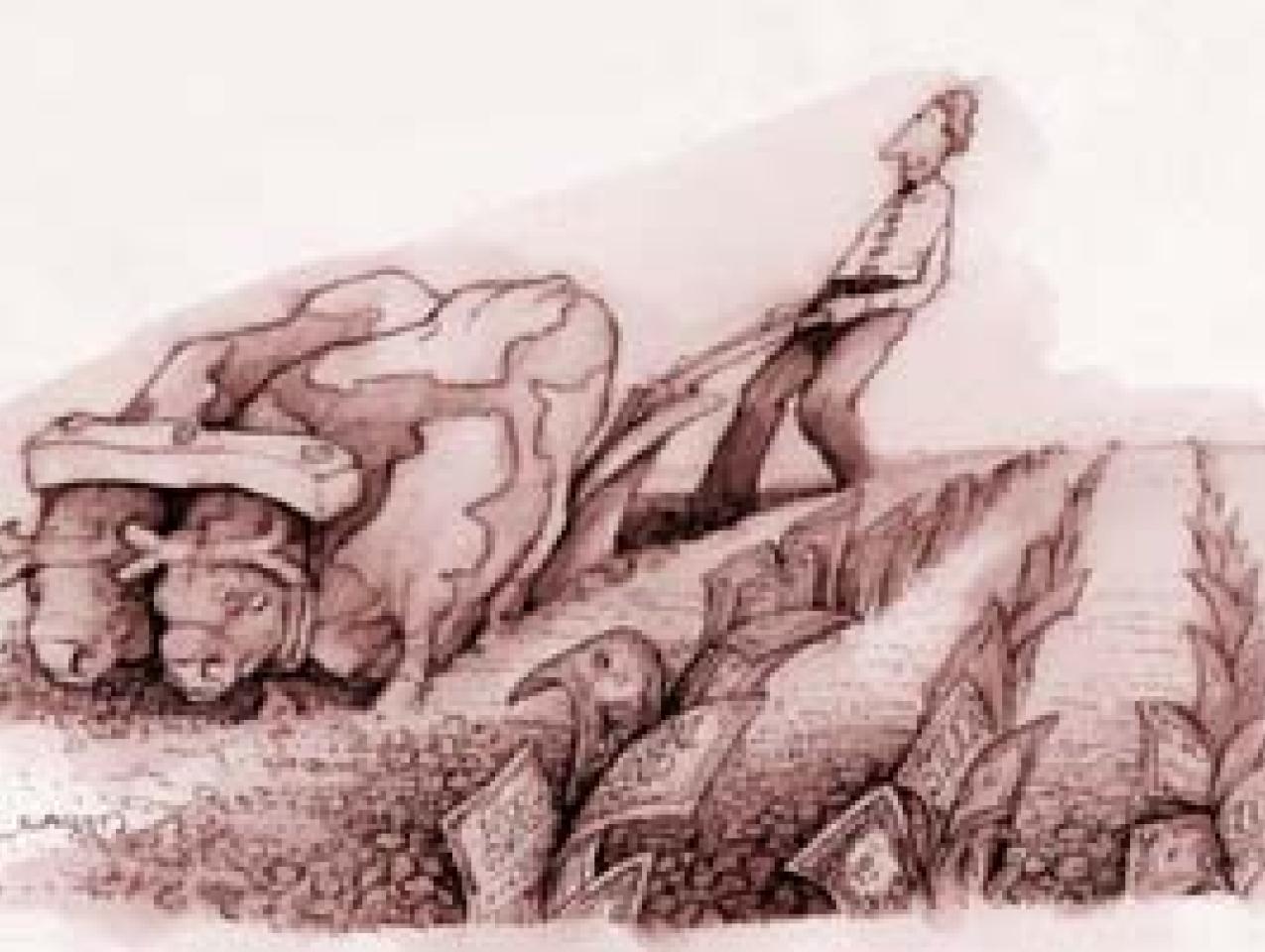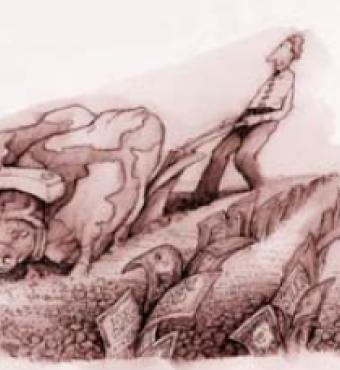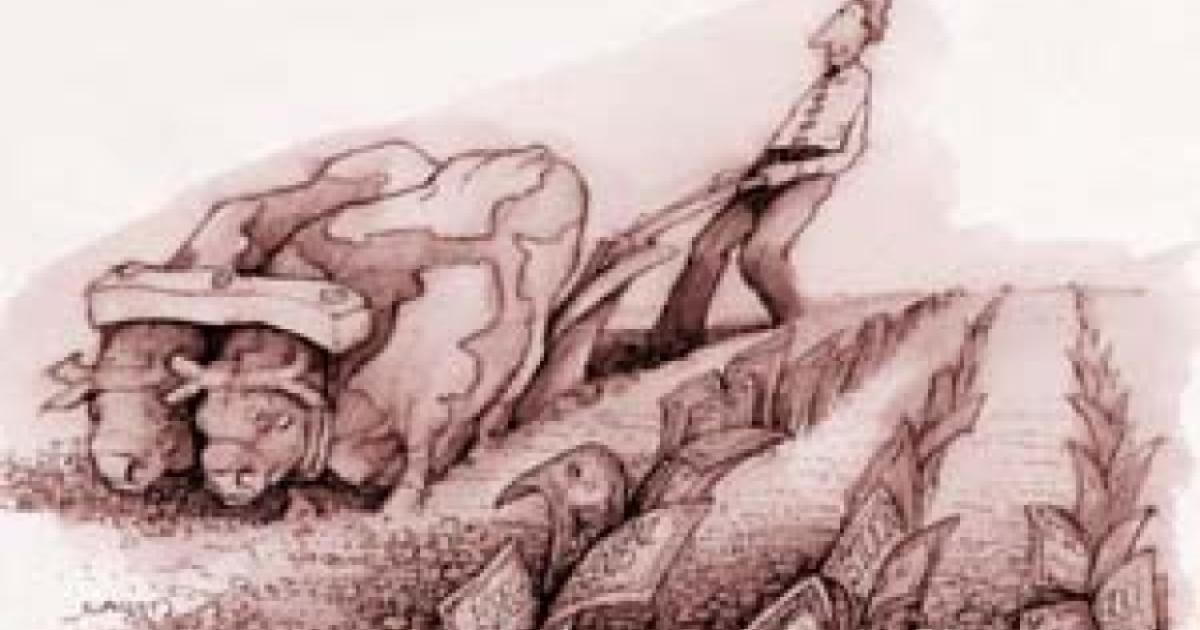- Contemporary
- Law & Policy
- Civil Rights & Race
- History
If we are to understand our own times, we must

understand what came before and a long time before. Origins matter. The basic character of a society is set early and is changed only by deep-reaching events and experiences over time that cut to the quick of people’s lives. That is why I like to tell audiences, not all of whom catch the references, that, to understand what is happening today, we have to take a longer perspective, to look behind Al D’Amato to Al de Tocqueville.
BIG OLD, BIG-UNIT AMERICA
I do not invoke Tocqueville lightly. For it is my basic contention that today’s postindustrial America in important respects more closely resembles the preindustrial America that Tocqueville described in Democracy in America in the 1830s than the industrial America in which most of us grew up. Industrial America was big-unit America: big government, big business, and big labor made most decisions and set most priorities; the men who ran them made deals and arrangements, and those below them followed orders. For a long time big-unit America worked well: It recovered from the Depression, it won World War II, it produced the prosperous postwar economy. But after a long generation, things turned sour. Big government gave us the Great Society and the Vietnam War, riots at home and a war we could not win abroad; big business gave us planned obsolescence, and huge corporations headed toward bankruptcy and breakup; big labor atrophied almost out of existence.
Big-unit America was the product of industrialization and even more of war. For war is the great friend of the state. In World War I the government ran the railroads and shipyards and set the price and distribution of food; World War II was waged by big government, big business, and big labor, and for a generation afterward Americans worked productively and contentedly in large organizations. But as the big units stumbled, America resumed its Tocquevillian gait. Slowly, without much notice, with little central direction—for most articulate elites continued to cherish the dream of directing society, through big government and big media—America has gone back to its Tocquevillian character, which in turn had its roots in the colonial period: egalitarian, individualistic, democratic, decentralized, religious, property loving, lightly governed.
Much of our politics over these past twenty years has been a process of adjusting government to the increasingly decentralized character of the society: As Tocqueville said, government is shaped by mores, more than the other way around. The basic trend is not in doubt—toward the devolution of power from central government to state and local government, from bureaucracy to markets, from centralized experts to decentralized individuals. But the pace of progress, and the terms and conditions, is very much in question and is the stuff of much of our political debate.
WHAT HAS ALREADY CHANGED
If you question whether the change has been great, think of what we have seen in the last twenty years: the deregulation first of transportation, then energy prices, next telecommunications, and now electricity; enormous shakeups of major corporations, reshuffling of corporate assets, creation of hugely productive new technologies and enterprises that were not imagined a few years ago. The impetus of reform has come from odd quarters: airline deregulation from the chief of Jimmy Carter’s Civil Aeronautics Board and from Edward Kennedy, telecom reform from an activist liberal judge, electricity reform from states like California and New Hampshire. Note that almost no one predicted any of this. And yet today just about nobody talks seriously about going back to the regulatory shackles that were assumed to be eternal as recently as the late 1970s.
Similarly, look at what has happened to taxes. When Ronald Reagan came to office, the top tax rate was 70 percent and tax avoidance was a major industry. Since then, rates have been lowered and flattened; and if the top federal rate has risen in the 1990s, it is still far below 70 percent. In the meantime, high-tax states and cities have been forced by competitive pressures to lower their tax rates, sometimes by startling margins.
Even in the 1990s, with a Democratic president, there have been more important reforms—and the impetus for them has come from the periphery, not the center. Governor Tommy Thompson of Wisconsin, starting in 1987, changed the rules, reshaped the institutional culture of the bureaucracy, and showed that welfare reform was possible: Last March, Fond du Lac County, Wisconsin, the epicenter of welfare reform, sent out its last welfare check. Fond du Lac now has no citizens on welfare whatsoever—zero. Wisconsin’s success and the efforts of other states set up the political incentives for Congress in July 1996 to pass, and Bill Clinton in August 1996 to sign, the welfare reform act that devolved responsibility for welfare to the states. Welfare rolls are now dropping as steeply as they were increasing in the awful decade from 1965 to 1975, when welfare tripled.
The basic trend is not in doubt—the devolution of power from central government to state and local government, from bureaucracy to markets, from centralized experts to decentralized individuals.
On crime it was not Washington or our great universities that led the way. It was New York mayor Rudolph Giuliani and his police commissioners who showed that crime could be cut in half despite the preachings of federal experts and the criminology profession that in an unfair country like ours nothing much could be done about crime rates. Now Giuliani’s methods are being copied around the country, and crime rates are now falling as steeply as they increased during the decade of 1965 to 1975, when crime, like welfare, tripled. During those years society, with government sending important signals, gave sanction to welfare dependency and crime—said, in effect, that welfare dependency and crime are just what we expect in such an unfair and discriminatory country. Now with government again sending important signals, society has removed the sanction to welfare dependency and crime—said, in effect, we don’t want you to do these things and will treat you harshly if you do.
Meanwhile education reform is taking root all over the country, in a dozen different varieties—despite the efforts of centralized experts. Voters in states and localities have finally come to understand that those who have had custody of our schools—the teachers’ unions and schools of education—have done a poor job and that the solution is not to give them more money but to give parents more choice. Progress is not uniform, nor can it ever be in a Tocquevillian country. But it is finally happening, as people watch to see what works and copy it.
Even one of our most centralized programs seems on the verge of reform: Social Security. For a long time Social Security has been the third rail of American politics: Touch it and you die. But now the third rail has switched to the other side of the tracks. Suddenly the political danger is not in changing Social Security but in not changing it. This is the result of two great changes in the 1990s, one demographic, one economic.
The demographic change is the waning of the GI generation, long the great political supporter of Social Security. Nineteen ninety-three was the first year in which those turning sixty-five were too young to have served in World War II; now one-quarter of over-sixty-fives are part of the so-called Silent Generation. Meanwhile, Generation Xers are convinced they will not get a good return on the current Social Security program and want something else.
What they want has been suggested to them by the great economic change of the 1990s, the proliferation of equity ownership. Pollster Peter Hart reports that the proportion of people owning stock rose from 21 percent in 1990 to 51 percent in 1997. Defined benefit pensions, in which pension amounts are guaranteed by a centralized fund, are being replaced by defined contribution plans, in which the individual chooses between investment vehicles; the primary component of individual wealth is no longer residential real estate but stocks and other financial instruments. Most Americans are coming to understand that they are better off leaving less of their pensions dependent on the payroll tax system, which tends to rise 2 percent a year, and more on the stock market, which from 1926 to 1994 rose 5.5 percent a year. Whether the political actors will respond is unclear, but the demand for change is suddenly there: A decentralized society is pushing a centralized government to change.
All these policy changes reflect and strengthen a change in what Tocqueville called habits of the heart. In a big-unit society, Americans were beneficiaries dependent on the wisdom and care of centralized experts running a welfare state. In a Tocquevillian society, Americans are increasingly doers, decision makers, and investors, relying on their own choices from a wide array of options in the marketplace.
THE FEMINISTS AGAINST THE RIGHT
So far I have painted a pretty sunny picture. The great trend is toward freedom and abundance. The political arguments are mostly marginal, and the political results, whatever they are, do not seem capable of reversing the direction of things. But not all is necessarily for the good. If the great strength of a Tocquevillian society is freedom, the great danger is schism: A centrifugal society can fly apart. Indeed the America that Tocqueville visited was rent asunder thirty years later by civil war. The national consensus on mores and religion that he described in the 1830s was soon to be rent by disagreement between North and South over black slavery, which he identified as “the most formidable evil threatening the future of the United States.”
We are not headed toward another civil war. But we do seem to be in the midst of a culture war that has rent the national consensus on mores and religion that seemed so firmly established as late as the middle 1960s. And it is that culture war, as much as or more than marginal differences over economic issues, that roils the surface of politics and makes turbulent much of our political life. The two greatest sources of energy, enthusiasm, and élan in our two major political parties are the religious right and the feminist left. Neither was a serious political force a quarter-century ago, but both are mobilized groups including many millions of our fellow citizens today. The most fiercely argued issue over the past two decades has been abortion, an issue most practical politicians have always preferred to treat as peripheral but which is central to both the religious right and the feminist left.
Even issues that seem to be about economics are really struggles over culture. The left sponsored federal control of welfare and federal aid to education because it wanted to use the leverage of federal money to infuse welfare and schooling with liberal values that had little local support. So successful has this enterprise been that the right, in defederalizing welfare and encouraging alternative forms of schooling, must do its work shrewdly to overcome the liberal values now embedded in the caregiving professions.
Certainly we lack the consensus on moral and religious beliefs that Tocqueville believed was essential to the success of American democracy because it modulated and disciplined the otherwise centrifugal and fractious tendencies of a democratic republic. But if, as Irving Kristol and others have argued, we are in the midst of a religious revival, then it is not surprising there should be such cultural conflict; revivals by definition challenge and compete with existing practice and do not, at least in the short run, produce modulation and harmony. Paul Johnson in his new History of the American People argues that great religious revivals have provided the impetus and enthusiasm for great conflicts in American life: The First Great Awakening, starting in the 1740s, laid the groundwork for the Revolution; the Second Great Awakening, starting in the 1830s, paved the way to the Civil War. Historian Walter McDougall adds that the revival of the mainline Protestant denominations in the late nineteenth century led to another great turning point in American history, the emergence of an assertive and outgoing American foreign policy, beginning just one hundred years ago with the Spanish-American War.
We now lack the consensus on moral and religious beliefs that Tocqueville believed was essential to the success of American democracy.
The opposing forces in the culture war are asymmetric. The religious right is a decentralized movement, strongest as you get far from metropolitan centers, dismissed without a thought by the Washington Post a few years ago as “relatively poor, uneducated, and easily led.” The cultural left is more centralized, heavily represented in university, corporate, legal, and media elites, which are also the chief supporters of feminism and of racial quotas and preferences; its views have a virtual monopoly of expression in mainstream media.
THE FAILED PROJECTS OF THE LEFT
But the cultural right has the advantage of representing values and ideas that have traditionally been widely accepted and recognized, as they were by Tocqueville, as the basis of a successful democracy. The cultural left, in contrast, is faced with accumulating evidence that its projects are not turning out well. Racial quotas and preferences, once put in the spotlight, are rejected by most Americans. An education system designed to produce self-esteem rather than knowledge is increasingly, in the word of the street, disrespected. The feminist notion that childrearing should not distract women from careers is being undermined by a widespread sense that this generation of parents has not raised their children as well as their parents raised them. Some such feelings have found expression in public policy. As Paul Starobin of the National Journal puts it, welfare reform and Giuliani-style crime fighting amount to the replacement of the Nanny State by the Daddy State, the replacement of a generous and indulgent government by a government that insists on strict adherence to unambiguous rules.
WHAT STILL NEEDS TO CHANGE
Without much help from articulate elites, America has made great progress recently in discouraging lower-class vices. We have made less progress in encouraging middle-class virtues. A thoughtless moral relativism seems to have infected millions of Americans. Sociologist Alan Wolfe, interviewing hundreds of suburban Americans, was surprised to find an unwillingness to impose on others the moral obligations people readily imposed on themselves; and of course most voters seem reluctant, even if they believe the charges, to issue any condemnation of Bill Clinton. A whole generation of Americans seems to have been deprived of the vocabulary of moral discourse. We should remember that a society that believes only in skepticism eventually loses the disposition to defend itself and its basic values.
But there is no need to end on a somber note. These are problems of too much freedom, too much tolerance—the least unhappy of problems. And people do learn from experience. Despite the opposition or indifference of most of our articulate elites, America has found its way back to its Tocquevillian origins. Our politics is, with lurches and halts, refashioning our public institutions in line with the basic character, the mores, of the nation. And it is struggling, albeit with greater difficulty, prompted, it seems, by yet another religious awakening, to find its way on serious moral questions toward something like the bedrock consensus Tocqueville described.
















